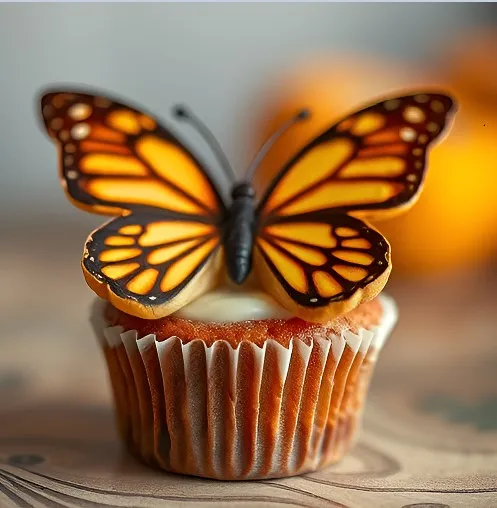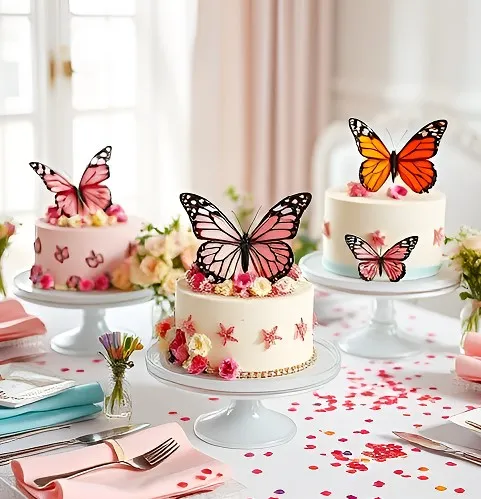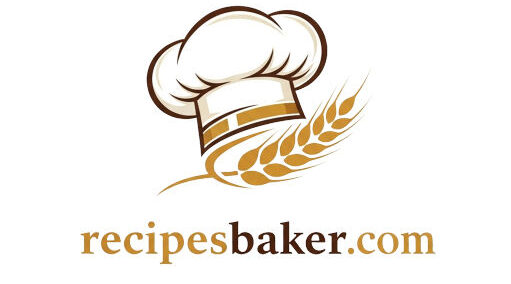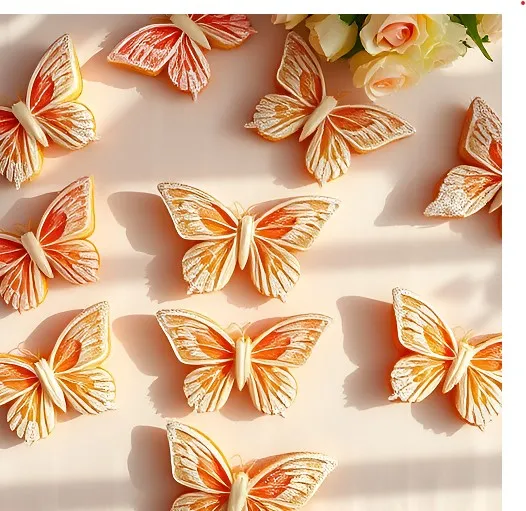Butterfly cakes have a special way of transforming an ordinary day into a celebration of sweet memories. This classic treat, with its playful twist on the humble cupcake, has been charming generations with its simple yet innovative design. Imagine a cupcake that takes a little detour from the beaten path—a cupcake that dares to be different by daringly removing its center to reveal a hidden layer of creamy goodness. Over the years, this creative confection has evolved into a symbol of nostalgia and culinary ingenuity, offering both an aesthetic delight on your dessert table and a burst of flavor that makes any moment worthwhile.
What Is a Butterfly Cake?
At its core, a butterfly cake is a playful reinvention of a classic cupcake. Picture your favorite cupcake, baked to perfection, waiting to be enjoyed. Now, imagine that you carefully slice out the center of that cupcake, not to waste it but to create a charming “wings” effect. You then fill the void with a rich, luscious buttercream or cream filling before placing the carved-out piece back atop the cake. The result is a cupcake that not only looks like a delightful butterfly with its delicate “wings” spread gracefully over a creamy center but also offers a contrasting texture when you bite in.
This delightful treat boasts several defining characteristics. The most notable is the cut-out design, which transforms a simple cupcake into a visually striking dessert. The filling—be it a classic buttercream, tangy fruit curd, or even a velvety mousse—adds an element of surprise, as it peeks out invitingly from the center. A light dusting of powdered sugar often crowns the confection, enhancing its aesthetic and giving it that timeless, delicate appeal.

Why Is It Called a Butterfly Cake?
The name “butterfly cake” is as whimsical as the treat itself. When you glance at these cakes, it’s almost instinctive to see a resemblance to a butterfly. The carved-out top creates two distinct “wings” that rest over the creamy filling like the delicate, ethereal wings of a butterfly. This striking visual has cemented the name in culinary folklore.
While there isn’t a detailed, documented history explaining exactly how someone first coined the term, the logic is delightfully straightforward. Just as butterflies captivate with their simple yet intricate wing patterns, these cakes captivate with a similarly simple yet artful modification. The transformation is subtle, yet it makes all the difference. In the realm of baking, where presentation often rivals flavor, the butterfly cake stands out for its ability to celebrate both.
The Enduring Charm and Popularity of Butterfly Cakes
Butterfly cakes are far more than just a clever twist on cupcakes—they are a beloved tradition that carries with them a sense of nostalgia and simple joy. For many, these treats evoke memories of childhood birthday parties, school fundraisers, or cheerful afternoons spent baking with family. They’re a testament to the idea that sometimes, the simplest changes can produce the most striking results.
There’s an undeniable charm to butterfly cakes, rooted in their accessible yet festive design. They’re not overly complicated to make, which means they’re a go-to when you need a dessert that is both fun and reliable. Their bite-size nature makes them perfect for parties—they are easy to serve, delightfully mess-free, and satisfyingly indulgent. Whether you’re hosting a casual get-together or planning an elegant afternoon tea, the butterfly cake brings a touch of whimsy that can elevate any event.
Moreover, butterfly cakes are a fantastic example of culinary creativity. They remind us that innovation doesn’t always require elaborate ingredients or high-tech tools; sometimes, all it takes is a little imagination and a willingness to reimagine the familiar.
A Sweet History of Butterfly Cakes
The Origins of the Butterfly Cake
Tracing the origins of the butterfly cake is much like trying to capture the flutter of an actual butterfly in your hand—complex, elusive, and filled with hints of mystery. While it’s difficult to pinpoint the exact moment when this delightful treat first fluttered into existence, many culinary historians agree that the concept likely evolved from the tradition of baking individual cakes. In an era where sharing small, personally portioned desserts was common, someone—with a bit of creative flair—decided to carve out the middle of a cupcake for an added burst of flavor. This ingenious twist paved the way for what we now know as the butterfly cake.
Baking, much like any art, is passed down through generations. The idea of personalizing a cupcake by adding an unexpected layer of goodness was an innovation born out of necessity and resourcefulness. It’s easy to imagine bakers of the past, in modest kitchens, experimenting with batter and fillings, and delighting in the small triumphs that led to the butterfly cake’s unique construction.

Early Recipes and Variations
In its earliest iterations, the butterfly cake was a study in simplicity. Early recipes typically called for a basic sponge cake batter, a straightforward mixture of flour, eggs, sugar, and butter. As the practice of cutting out the cake’s center became popular, so did the experimentation with the filling. Originally, many bakers opted for a simple sweetened cream as the centerpiece, but over time, variations began to emerge. Some recipes introduced hints of lemon zest or almond extract directly into the cake to give it a subtle twist, while others experimented with the filling by incorporating fruit jams, custards, or even chocolate cream.
These early variations exemplified the resourcefulness of home bakers. With limited ingredients and equipment, bakers across generations honed in on what worked best—not only in terms of taste but also ease of preparation. The butterfly cake thus evolved, adapting to regional tastes and seasonal ingredients. Its inherent versatility allowed it to remain relevant across different eras, from modest family kitchens to the cutting-edge patisseries of modern cities.
Butterfly Cakes in Popular Culture
It is no exaggeration to say that butterfly cakes have made their mark on popular culture. They’ve appeared in vintage cookbooks and have been a recurring motif in nostalgic references to childhood festivities. In many classic children’s literature and family anecdotes, the image of a small, exquisitely decorated cupcake with a hidden surprise at its core serves as a metaphor for the delightful mysteries of life. The butterfly cake, with its playful design and endearing simplicity, fits perfectly into this narrative landscape.
Over time, images of butterfly cakes have graced party invitations, social media posts, and even food blogs dedicated to celebrating culinary creativity. Their reputation as both a festive treat and a symbol of cherished memories has only grown, making them a darling of both professional bakers and home enthusiasts alike.
The Rise of the Modern Butterfly Cake
In recent years, butterfly cakes have experienced a notable resurgence, blossoming from a quaint family treat into a trendy dessert item at birthday parties, high-tea events, and even upscale gatherings. Modern bakers have embraced the canvas that this cake provides, using it as a starting point to experiment with innovative flavors, textures, and artistic decorations. Contemporary variations might feature vibrant fillings such as pistachio cream, zesty citrus curds, or even a hint of spiced chai, paired with delicate accents like edible flowers or glittering sugar work.
The charm of the butterfly cake lies in its ability to be both traditional and transformative. Although it has its roots in time-honored techniques, modern incarnations cater to current food trends that emphasize freshness, creativity, and personalization. Today’s butterfly cakes are not only a nod to the past but also a celebration of culinary innovation, reaffirming their timeless appeal.
The Classic Butterfly Cake Recipe: A Step-by-Step Guide
One of the greatest pleasures of the butterfly cake is that it’s accessible enough for the budding home baker yet impressive enough to grace the table at a sophisticated party. Whether you’re a novice or a seasoned pro, this step-by-step guide will lead you through creating your own batch of these captivating cupcakes that are as pleasing to the eye as they are to the taste buds.
Essential Ingredients
For the base cake, you will need a few staple ingredients that form the backbone of the recipe. Start with all-purpose flour, which provides the necessary structure. Sugar, not only for sweetness but also for helping the cake achieve a light, tender crumb, is equally important. High-quality butter is the source of richness and flavor, while eggs serve as a vital binding agent that adds volume and moisture. A splash of milk ensures that the batter remains soft and moist, and vanilla extract imparts that classic, comforting aroma. Finally, a dash of baking powder helps the cake rise, ensuring a soft, airy texture.
The buttercream filling, which is arguably the heart of the butterfly cake, also requires a short list of ingredients—primarily softened butter and powdered (confectioners’) sugar. A little milk or cream is added to achieve a smooth, spreadable consistency, and a hint of vanilla extract can be included to keep the flavors aligned with the cake base.
Essential Equipment for Success
Before you begin, make sure your kitchen is outfitted with the right tools. A quality muffin tin is critical, as it shapes the cupcake batter into the perfect individual cakes. Additionally, you will need a set of mixing bowls for combining ingredients, a hand whisk or electric mixer to achieve that light, fluffy texture when creaming butter and sugar, and precise measuring cups and spoons to ensure the correct proportions. A cooling rack is also indispensable once your cakes emerge from the oven, allowing them to cool evenly without losing their shape.
Baking the Cake Bases: Achieving Light, Fluffy Perfection
The journey to a perfect butterfly cake begins with baking an ideal cupcake. Begin by preheating your oven to the appropriate temperature—usually around 350°F (175°C). In a large mixing bowl, start by creaming together the softened butter and sugar, working it until the mixture is pale, fluffy, and full of air. This step is essential, as the incorporation of air into your batter is what ultimately leads to a tender crumb. Following this, beat in the eggs one at a time, ensuring that each is fully incorporated before adding the next.
In a separate bowl, sift together the all-purpose flour with baking powder. Sifting not only prevents any lumps from forming but also ensures that the baking powder is evenly distributed throughout the mixture. Gradually add the dry ingredients to the creamed mixture, alternately with a splash of milk, until the batter is smooth and well combined. Take care to mix just until the ingredients are integrated—overmixing can lead to the development of gluten, resulting in a denser, tougher cake.
Ladle the batter evenly into the muffin tin, filling each cup about two-thirds full. This gives the cake the space it needs to rise while still maintaining a moist, soft center. Place the muffin tin in the preheated oven and bake until the cakes turn a golden hue on the outside and a toothpick inserted into the center comes out clean. The baking process should yield cupcakes that are tender yet sturdy enough for the next phase—the transformation into butterfly cakes.
Crafting the Signature Buttercream Filling
No butterfly cake would be complete without its luscious, silky filling. Once your cupcakes have cooled to room temperature, it’s time to prepare the buttercream. Begin by placing softened butter in a clean mixing bowl and beating it until it’s light and fluffy. This process not only creates a smooth texture but also enhances the butter’s natural flavor. Next, gradually sift in the powdered sugar to avoid an overwhelming sugar cloud that can arise from loose, airborne dust. Beat on a low speed to incorporate the sugar slowly, and then switch to a higher speed until the mixture is creamy.
A small amount of milk or cream is then added to the mix—just enough to achieve a consistency that is smooth and easily spreadable. If desired, a splash of vanilla extract can be introduced at this stage to heighten the flavor profile, keeping in step with the aroma of the cake base. The end result should be a rich, decadent buttercream that is as inviting to the nose as it is to the palate.
Assembling the Butterfly Cake
After preparing both the cupcakes and the buttercream, the moment of transformation arrives. Using a small, round cutter or even a carefully held teaspoon, gently remove a circular section from the center of each cupcake. The removed piece should be large enough to create a noticeable “window” into the cupcake’s interior. Fill each cavity generously with the prepared buttercream, allowing it to spill slightly over the edges. Finally, repurpose the removed cupcake top as a decorative “butterfly wing” by placing it back over the filled center.
The result is a delightful treat that boasts not only a striking visual contrast—soft cake meeting velvety cream—but also layers of texture that melt together with every bite. Whether served on a party platter or as a standalone dessert, your butterfly cakes are sure to become the star of any occasion.

Mastering the Art of the Butterfly Cake: Essential Baking Tips
Ensuring that your butterfly cakes turn out perfectly every time can raise the dish from delicious to downright unforgettable. Here are some expert tips that will help you consistently achieve a light, moist cupcake and a luxuriously smooth filling.
Achieving the Perfect Cake Texture
The secret to a successful butterfly cake lies in the light and airy texture of the cupcake. One crucial tip is to ensure that your butter, eggs, and other ingredients are all at room temperature. Cold ingredients can hinder proper mixing and lead to a denser cake. Additionally, once you introduce the dry ingredients, mix only until just combined. This careful handling prevents the gluten in the flour from overdeveloping, which can result in a tougher crumb than desired. Finally, monitor your baking time closely—taking the cake out at the right moment is key to achieving a moist, tender base.
Even Baking and Oven Practices
No one wants to encounter cupcakes that are burnt along the edges yet raw in the middle. To avoid such pitfalls, invest in a reliable oven thermometer. Ovens can often run a bit hotter or cooler than their settings indicate, so knowing the exact temperature can be a game-changer. Place your muffin tin in the center of the oven to ensure even heat distribution and try not to open the oven door too frequently during baking, as sudden temperature changes can affect the rise and texture of your cakes.
Troubleshooting Common Issues
Every baker, no matter how experienced, occasionally runs into some hiccups along the way. If you notice that your cupcakes are sinking in the middle, the likely culprits are opening the oven too early or an inaccurately low oven temperature during baking. Conversely, if the cupcakes turn out dry, check your portion sizes—the correct balance of wet to dry ingredients is paramount—and be cautious not to overbake them. If the batter appears too dense, it may be due to overmixing once the flour is added. Remember, baking is as much about art as it is about science; each batch gives you a chance to learn and perfect the process.
Storing Your Butterfly Cakes for Lasting Freshness
Whether you’re planning ahead for a big event or saving some treats for later, proper storage is essential. For short-term storage (one to two days), keep your butterfly cakes in an airtight container at room temperature. This helps maintain the cake’s moisture while keeping the buttercream intact. If you need to store them for longer periods, consider refrigerating them. When ready to serve, bring the cakes back to room temperature to allow the flavors to shine once more. In cases where you’ve baked a larger batch than you can consume, remember that the cupcake bases can also be frozen. Wrap them individually in plastic wrap and then foil before placing them in the freezer, ensuring that when you’re ready to indulge, they’ll taste just as delightful as when freshly baked.
Butterfly Cakes for Every Occasion: Creativity Meets Tradition
One of the many reasons butterfly cakes have such enduring appeal is their versatility. They are not only a nostalgic treat but also an ideal dessert for a variety of occasions, whether you are hosting a children’s party, organizing an elegant afternoon tea, or looking for that perfect, thoughtful gift.
Butterfly Cakes at Children’s Parties
For many, butterfly cakes are synonymous with joyful childhood celebrations. Their vibrant appearance and whimsical design naturally captivate young minds. When preparing these treats for children’s parties, consider adding extra playful touches—sprinkle a little edible glitter, or decorate with colorful candies and sprinkles that appeal to little ones. The fun of watching children delight in discovering the creamy center only adds to the magic of the day.
In Summary
Butterfly cakes offer us the perfect blend of tradition and modern creativity. They remind us that food is not just about sustenance—it’s also about memories, shared experiences, and the artistry hidden in everyday moments. Whether you’re a seasoned baker or someone who’s just beginning your culinary journey, every step you take in crafting these delightful cupcakes is just another way of celebrating life’s intricate tapestry.

